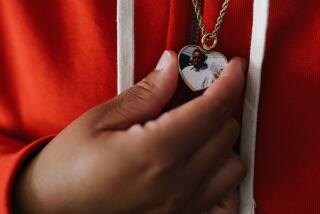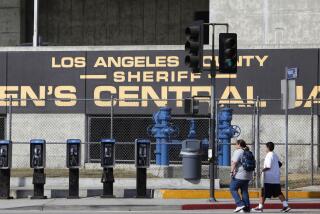California’s prisons and jails have emptied thousands into a world changed by coronavirus
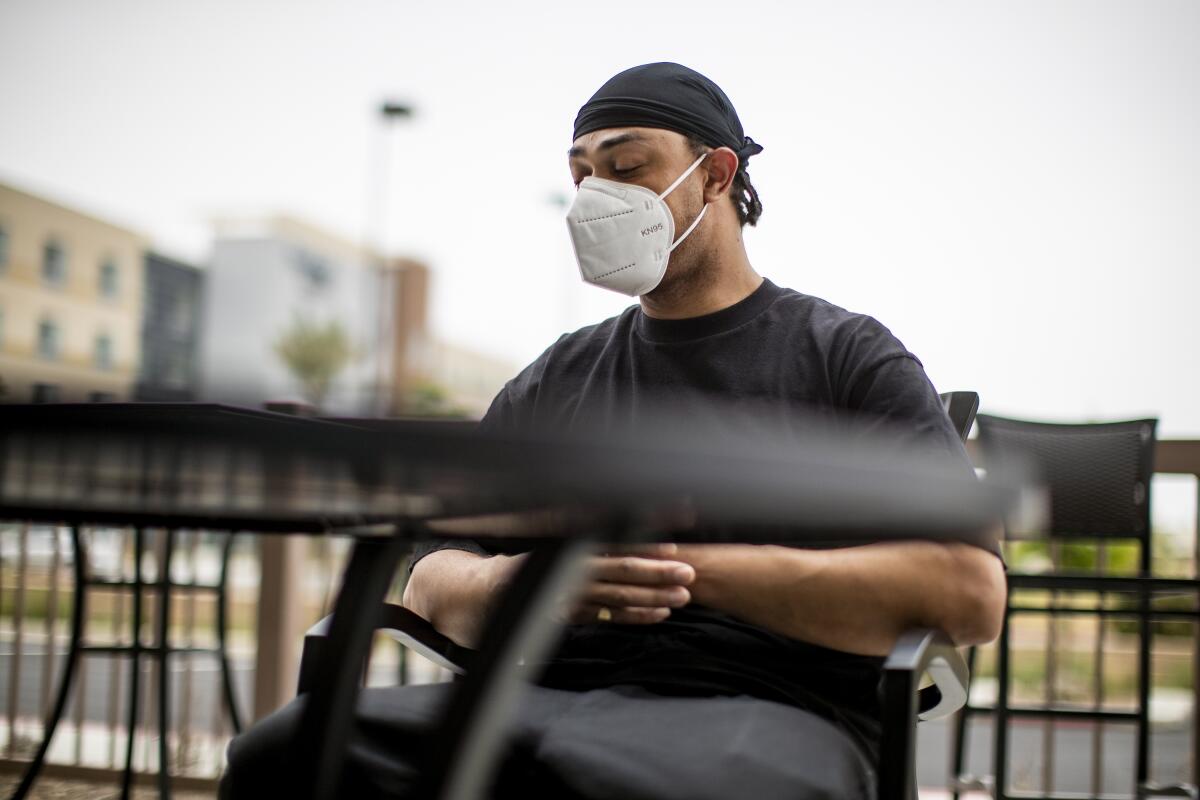
- Share via
In short order, the coronavirus pandemic has ushered in a sweeping and historic emptying of California’s overcrowded prisons and jails, as officials have dramatically lowered the number of people held in custody to avert deadly outbreaks.
State data show California’s prisons have released about 3,500 inmates while the daily jail population across 58 counties is down by 20,000 from late February.
The exodus is having a profound and still-evolving effect: Those leaving custody enter a vastly different world in which a collapsed economy, scant job opportunities and the closure of many government offices have compounded the challenges of getting lives back on track.
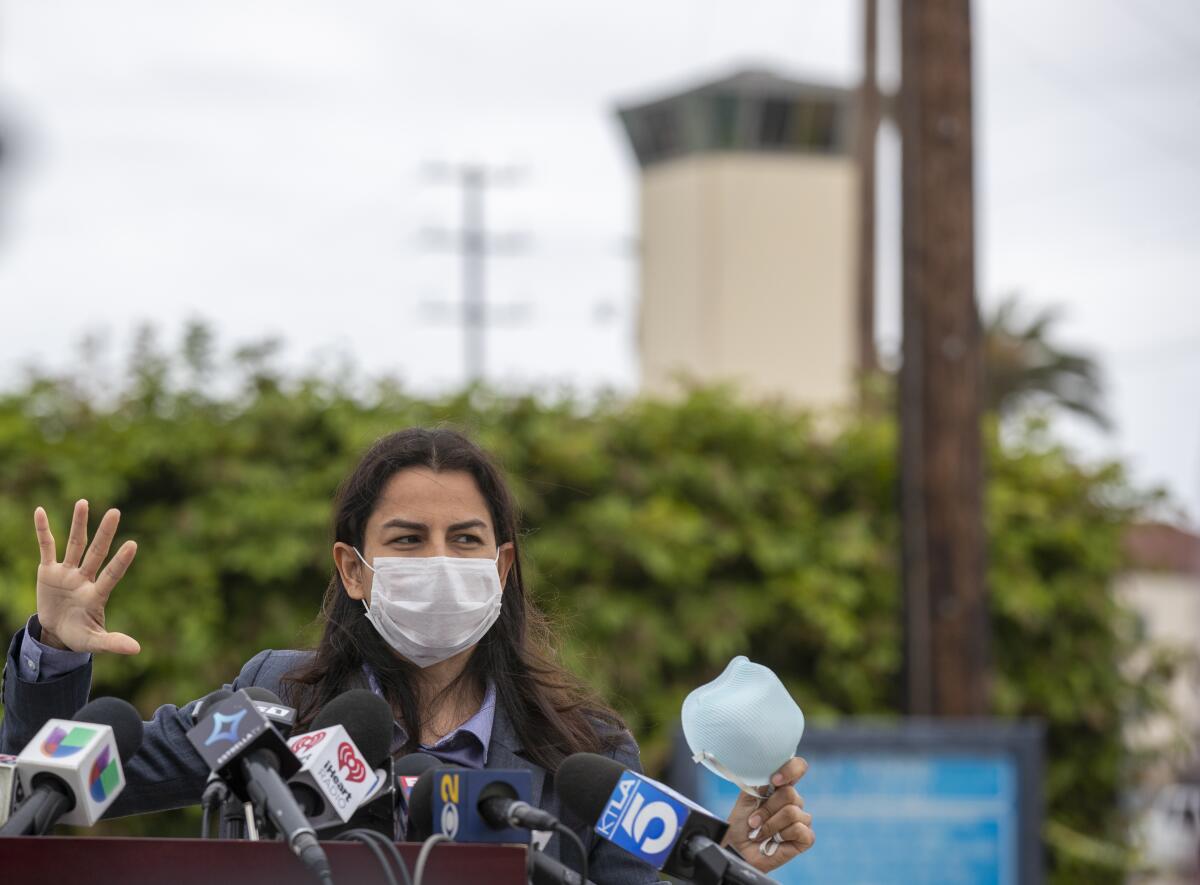
Reentry programs are struggling to meet the deluge of incoming inmates as the disease has forced them to close shelters and serve fewer people.
“People are continuously getting out. … Where are those folks going?” said Jay Jordan, executive director of Californians For Safety & Justice, a nonprofit criminal justice reform group. “Seventy-five percent of people getting out of prison right now have no plan. Nowhere to go.”
Some of those released from jails unknowingly carry the novel coronavirus, potentially infecting family, friends and the community. Advocates say many run the risk of ending up homeless when jailers don’t connect them to services.
Others have taken advantage of the pandemic to commit more offenses, in some cases within hours of leaving jail. Law enforcement leaders and many district attorneys see an intensifying public safety threat posed by the mass release as well as a trampling of the rights of crime victims.
“There was a one-size-fits-all approach which was really difficult to understand,” said Sheriff Ian Parkinson of San Luis Obispo County, where no jail staff or inmates have contracted the virus. “Now I’m putting people out on the street that a judge might not put out.”
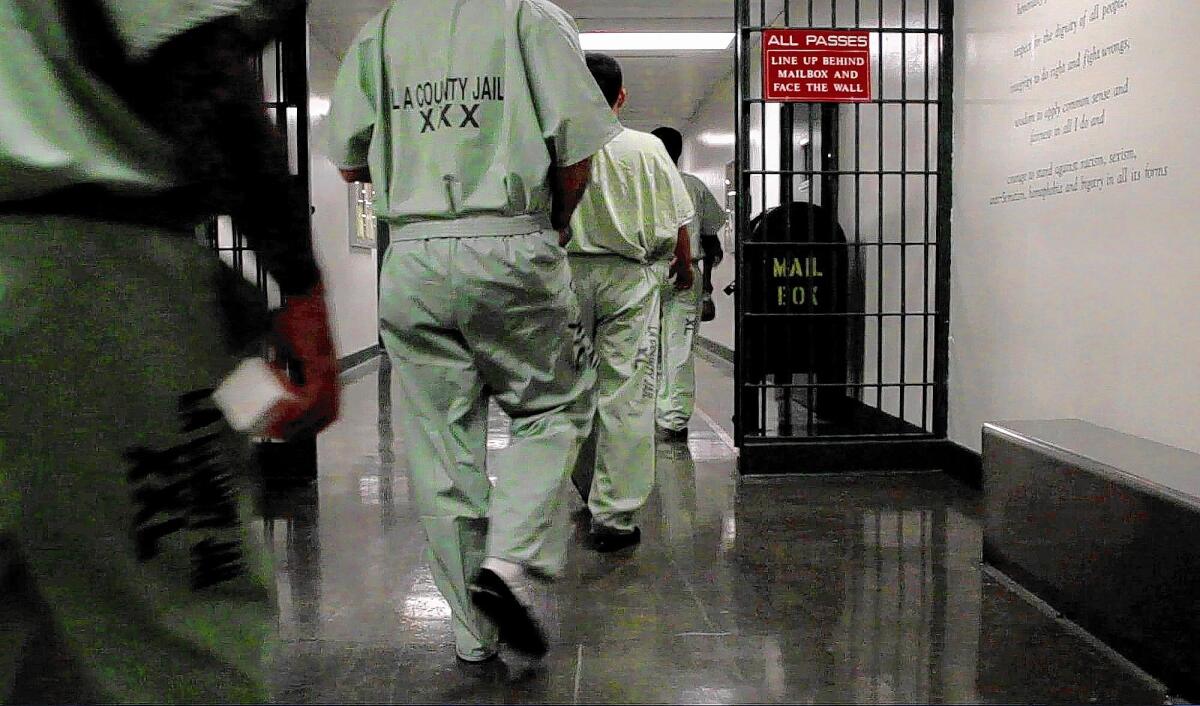
‘It would be very difficult if we did nothing’
On a typical day, there are still just over 50,000 people in California’s constellation of jails and 116,000 in state prisons.
The releases have been accomplished through a patchwork of measures, nearly all of which have generated controversy, including reduced bail for some and early release for those due to be out within 60 days. Others awaiting trial gained freedom through approvals from prosecutors, public defenders and judges, a process that resulted in about 700 people in L.A. County getting out. Such measures have pushed L.A. County’s jails — the largest system in the nation— from a pre-pandemic population of 17,000 down to less than 12,000.
“It would be very difficult if we did nothing, and left all 17,000 inmates in, to contain the spread of this disease,” said Dist. Atty. Jackie Lacey.
Perhaps most controversially, the state Judicial Council ordered zero bail last month for misdemeanor and low-level felonies.
The high risk of infections in institutional settings such as nursing homes have informed decisions to reduce jail and prison populations.
Fears of widespread outbreaks have been borne out: At the federal prison at Terminal Island, about 700 inmates have tested positive for the coronavirus, and eight have died. More than 900 inmates in a federal prison in Lompoc contracted the virus, the worst outbreak in the federal prison system. Five died at the men’s prison in Chino, where 443 inmates have tested positive for the virus.
Dr. Mark Malek, the former director of infection control and epidemiology for the L.A. County Sheriff’s Department, said jails and prisons are constantly challenged by infectious diseases, but COVID-19 poses particular threats.
“Social distancing can be done to a certain degree, but you can’t take 100 people in a dorm and quarantine them separately. You have to quarantine them in the dorm,” Malek said. “And we are not dealing with a 100% perfect healthy population here.”
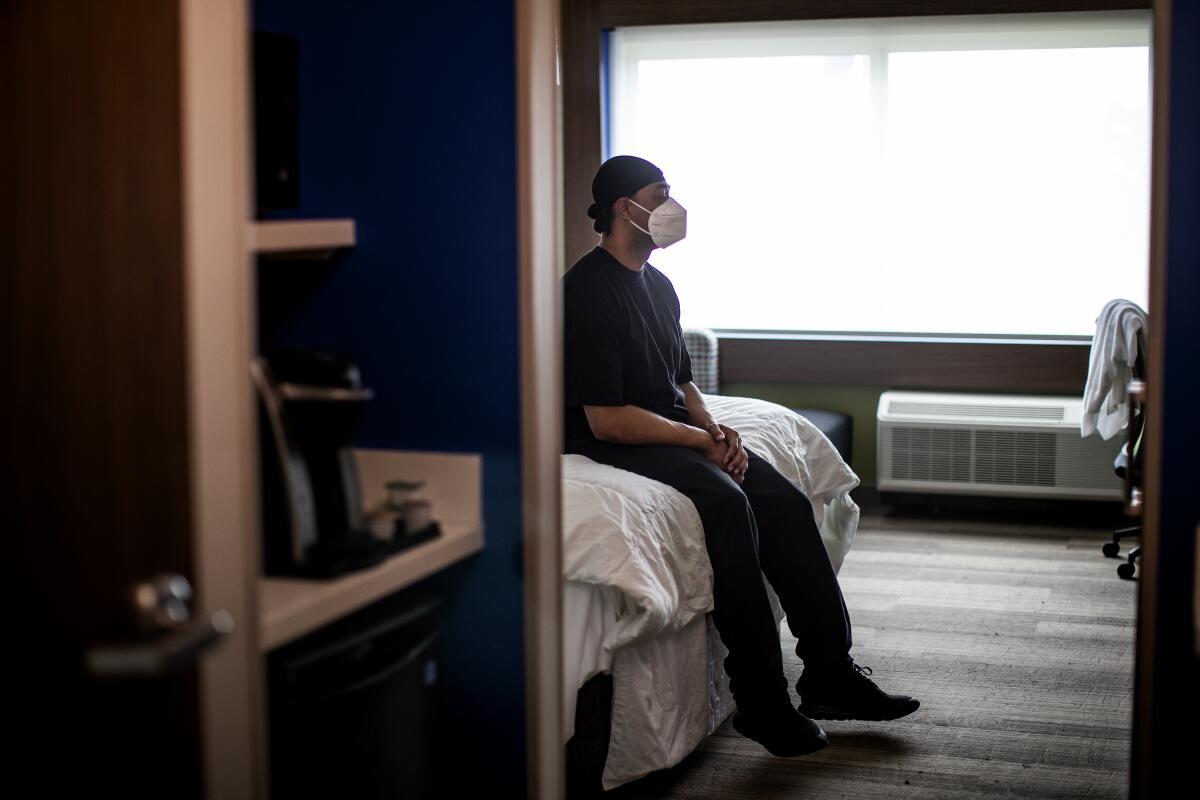
‘Who’s answering the phone?’
Edward Harris, whose record includes convictions for domestic violence and being a felon in possession of a firearm, was scheduled to walk out of Centinela State Prison in the Imperial County desert in late May when a parole officer told him “You’re gonna be leaving fast” and to pack up.
As coronavirus spreads, California prisons plan to release 3,500 inmates early.
He was among the 3,500 prison inmates who had their release accelerated by Gov. Gavin Newsom. But instead of going home, an old warrant caused him to be transferred into Riverside County’s jail system, which was also experiencing an outbreak.
He was finally released the night of April 9, but had no place to go. His family was hunkering down in Texas, and he didn’t know if he could reach any friends nearby.
“They got a phone right there that you get to use, but once again it’s a collect call from a payphone,” Harris, 35, said in an interview. “Here it is like 10 o’clock at night, who’s answering the phone? A collect call at that?”
A lifeline came in the form of a phone number scrawled on a post-it note by his cellmate connecting him with Jordan’s group, which has paid for his hotel room.
Advocates and service providers statewide have reported a similar lack of planning over the flood of early releases. Susan Burton, founder of the reentry program A New Way of Life, said the L.A. County Sheriff’s Department refused to coordinate releases from its women’s jail.
Last month, about an hour before Burton set out to pick up a woman eligible for release because of a preexisting medical condition, the Sheriff’s Department called and told her not to come. Burton said she doesn’t know where the woman ended up.
“I felt it was really painful that they would rather just release the person instead of having a designated place for this woman to shelter in place,” said Burton, who opened a nine-bed house to prepare for the surge of early releases.
Challenges persist even when jails do coordinate with reentry groups. When Santa Clara County became an early locus of outbreaks, the Sheriff’s Department asked one of the largest local shelters, Home First, to expect an influx of 200 to 300 inmates. Home First had to turn them away.
Andrea Urton, chief executive of the Milpitas shelter, said she had to make the difficult choice of protecting those already under her care from potential infections.
“We felt that we needed to make the decision because if we loaded up our facilities to max capacity … we would have an outbreak in our homeless shelters,” Urton said.
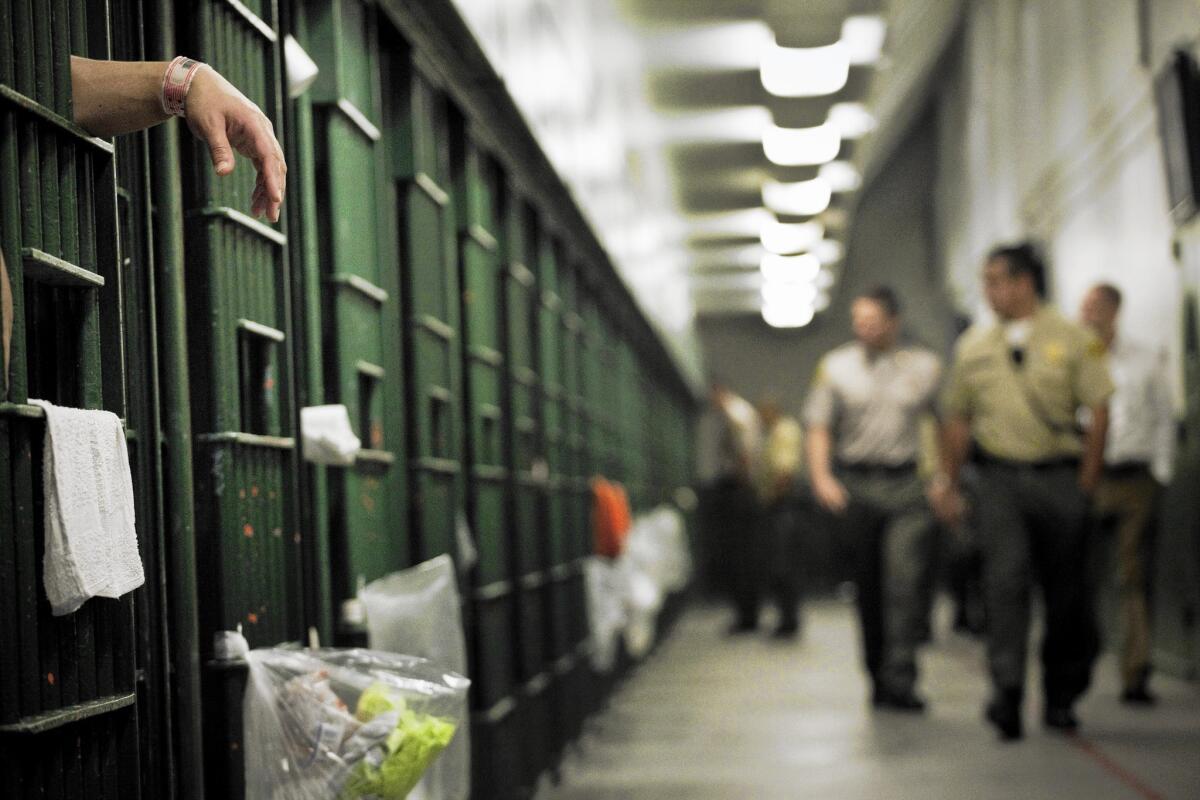
In Los Angeles County, Homeboy Industries had to temporarily close its doors in mid-March due to financial headaches and distancing restrictions just as nearby Men’s Central Jail was releasing scores of inmates.
“We see the guys that come from the county jail, in their black paper jumpsuits,” said associate executive director Hector Verdugo. “And we’re saying, ‘I’m sorry brother, but our doors are closed for now due to COVID-19, but here’s a care package.’”
Reentry providers statewide said the failure of some jailers to guide those who are being released toward transitional housing could encourage recidivism. Many ex offenders had no homes to go to before the pandemic, and with shelter and employment options more limited now, some may wind up stealing to survive.
“They are releasing people .... that have nowhere to go. Then the sheriff’s departments are turning around saying these people will commit crimes,” Jordan said. “How inhumane is that?”
In L.A. County, the Office of Diversion and Reentry typically helps inmates with mental illness or substance abuse problems find housing, but the coronavirus has forced a new strategy.
“We slowed our work down in court and shifted our resources to address the number of people released from jail,” said Peter Espinoza, a retired Superior Court judge who now heads the office. Espinoza said they added 211 beds in new housing sites, and found housing for more than 170 inmates in a two-week period.
He said inmates in L.A. County generally are not being tested for COVID-19 before their release unless they show symptoms and many service providers now are checking for symptoms when they arrive.
The case of Frank Cooper underscores the risks of inmates as a vector for spreading the virus. Cooper was scheduled to be released from Riverside County jail in November, but was let go on April 24 to serve the rest of his term on house arrest. On his way out, jail staff wore gloves and masks, and put his personal belongings in a bag marked “COVID.”
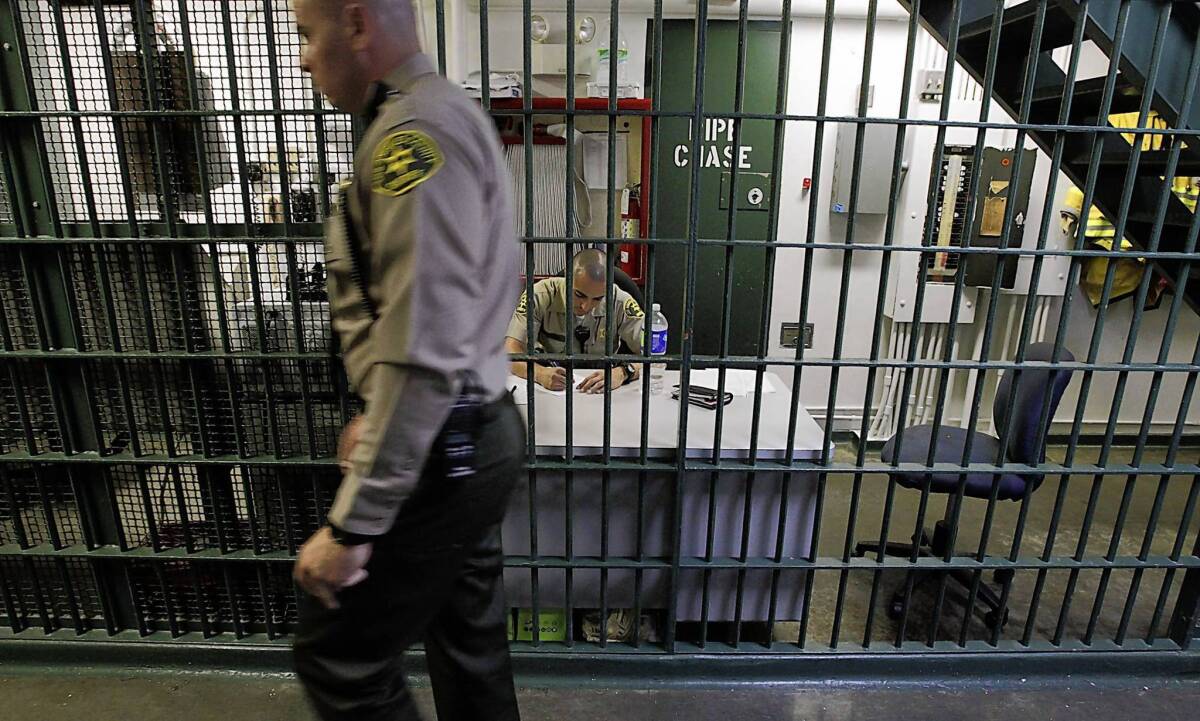
Cooper was confused — he wasn’t sick and hadn’t even been tested. But a deputy who drove Cooper to the county jail in Banning to be released said the measures were necessary because his dorm was quarantined. Before leaving, a nurse took his vital signs and swabbed him for the virus.
Riverside County officials have yet to officially give him his results. Cooper sought his own test and learned May 2 that he was positive for the coronavirus.
“It’s only because I’m a nurse and I did take some precautions,” said his wife, Jackie Cooper. “If I had just been a lay person going to pick him up with no mask, kissing him, hugging him … it could be a different scenario now.”
‘I had anticipated hitting the ground running’
Once outside, the closure of businesses and government services poses daily obstacles. Angela Hernandez, 38, was released from prison March 19, the day Newsom announced a statewide shelter-in-place order. She secured a spot at one of Burton’s reentry homes in L.A., but needed to return to Bakersfield for a parole check-in and feared riding a bus would risk exposure to the virus.
“I didn’t want to put myself in a bad predicament, but I didn’t want to wait it out either,” Hernandez said.
Burton said she ended up driving Hernandez to Bakersfield. When they arrived, Burton said, the parole officer wasn’t there. She checked in and filled out some paperwork, ending a trip they both viewed as unnecessary.
After nearly 11 years in state prison, Sureka Weinberg, 42, was released April 17 and entered a South L.A. residential program.
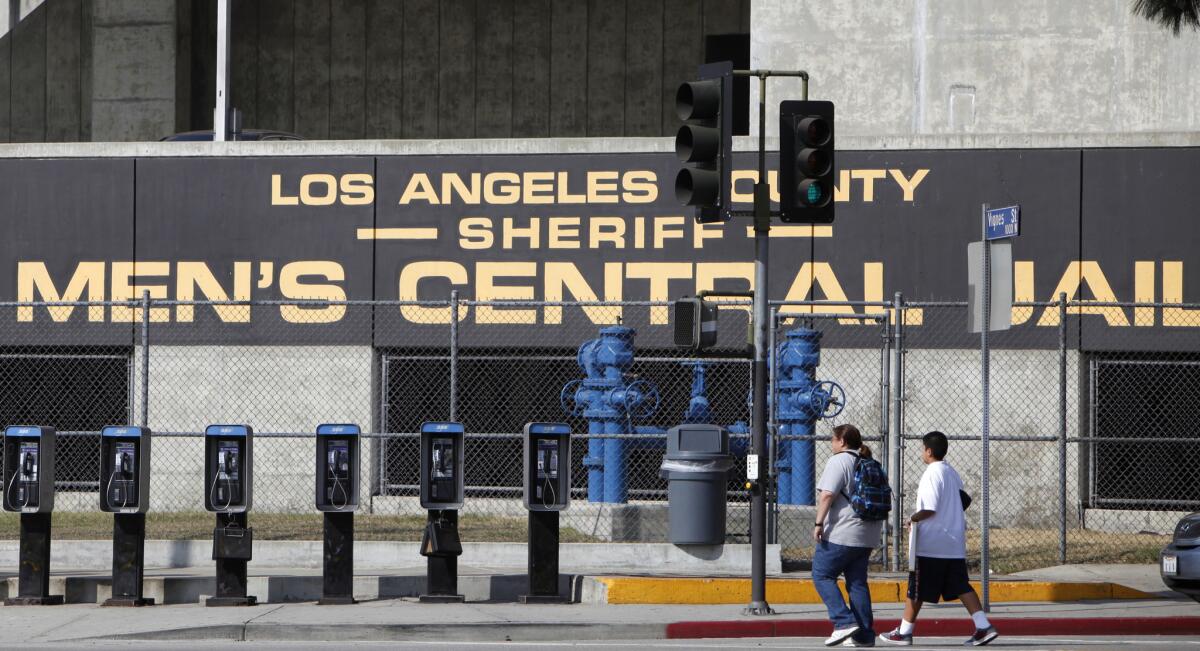
The DMV is closed, so Weinberg can’t get a new identification card. She doesn’t know where her Social Security card is, can’t open a bank account and doesn’t have a credit history.
“I had anticipated hitting the ground running,” said Weinberg, who according to public records was an attorney before the fatal DUI crash that landed her behind bars. “Not only am I just not able to do that, but I’m anonymous as far as society’s concerned.”
Weinberg said she spends her newfound freedom studying online, taking Alcoholic Anonymous meetings via Zoom, and performing household chores.
‘Mass hysteria’ to empty jails and prisons
Police agencies have been quick to single out re-offenders. Alameda County has released nearly 1,000 inmates since March 15 and about 30 have been rearrested, said Sgt. Ray Kelly.
While crime in L.A. is down since the pandemic began, law enforcement officials say career criminals are exploiting the new zero-bail policy.
Among them was Rocky Music, whose antics were detailed on the Sheriff’s Department Facebook page. Music was first detained on April 19 by Oakland police on suspicion of driving a stolen vehicle. Twelve hours later, he was released because of the zero bail order.
Kelly said that 37 minutes later, he allegedly carjacked someone near a transit station in Dublin, and drove the car to a San Ramon gas station, where he tried to carjack a second vehicle. Police responded, chased Music and ultimately detained him using a police dog, Kelly said.
“There was mass hysteria to de-incarcerate over COVID-19, and in our county it’s proven not to be based on fact or scientific evidence, but based on fear,” Kelly said.
The Alameda County jail population went from a pre-pandemic average of 2,600 to about 1,775 people. More than 50 inmates and two staff have tested positive for the coronavirus, and all but 14 current inmates have recovered.
Still, Kelly conceded it “helped tremendously” that fewer people were in custody and social distancing could be implemented, especially in the large dorm that houses minimum-security prisoners.
In San Luis Obispo County, Sheriff Parkinson said his agency took “a pretty aggressive stance” on the coronavirus: New inmates stay in a quarantine area for 14 days before going into the general population. Staff wear masks, and sheriff’s deputies and inmates are given regular temperature checks. All 10 inmates who were tested had negative results.
Parkinson said his deputies supply all those released with Narcan, a prescription drug to treat opioid overdoses. Jail staff try to provide several days worth of medications, but the zero bail has limited their ability to get an accurate medical history when those arrested are swiftly released, he said.
San Luis Obispo County Dist. Atty. Dan Dow said repeat offenders face few consequences, with criminal trials suspended and bail for many nonviolent offenses eliminated.
“Bail is there to make sure a person has an incentive to come to court and remain crime-free,” Dow said. “Just releasing them on zero bail — they have nothing to lose.”
In one Orange County case, a man charged with vehicular manslaughter in connection with a street racing crash that left two people dead saw his bail fall from $100,000 to $20,000. The man was released last month, said Dist. Atty. Todd Spitzer.
“There comes a point where you have to weigh that the inmate might get a particular disease — which they might get outside of jail, that we all might get it outside of jail — against the public safety and the propensity that these people might commit crimes against another individual,” Spitzer said.
Others argue that California’s criminal justice system has long jailed too many for minor offenses and welcome the releases.
San Francisco Dist. Atty. Chesa Boudin, a former public defender and champion of more progressive law enforcement policies, said early releases there included a woman with a high-risk pregnancy and no criminal record who was serving time for a misdemeanor as well as another person too mentally ill to stand trial.
The surge in releases highlights a need to fund more rehabilitative programs, he said.
“One of the great failings of the American system of mass incarceration is its refusal to invest in reentry. … It helps create and perpetuate a cycle of crime and violence, of poverty and victimization,” Boudin said. “It is possible to decrease the number of people in our jails and in our prisons in a way that does not impact public safety and does not lead to an increase in crime.”
More to Read
Sign up for Essential California
The most important California stories and recommendations in your inbox every morning.
You may occasionally receive promotional content from the Los Angeles Times.


